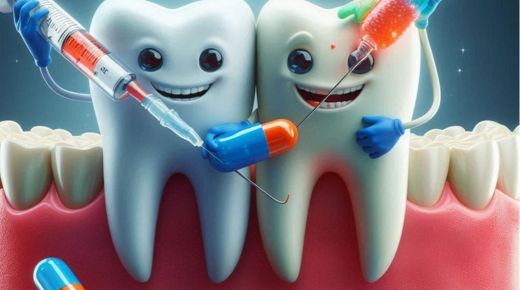Facial Trauma Reconstruction: Restoring Form and Function
Facial trauma reconstruction is a delicate and complex medical specialty that seeks to restore the aesthetic and functional integrity of the face after injury or trauma. The face is a vital aspect of human identity, playing a crucial role in communication, self-expression, and overall quality of life. When facial trauma occurs the physical and emotional consequences can be devastating.
Facial trauma reconstruction surgery at the dental clinic Manassas, VA aims to address these issues, utilizing advanced techniques and technologies to repair and rebuild damaged tissues, restore facial symmetry, and rejuvenate overall appearance.
What is facial trauma reconstruction?
Facial trauma reconstruction refers to the surgical process of restoring the aesthetic and functional integrity of the face following injuries or trauma that affect the soft tissues, bones, or underlying structures. This complex and highly specialized field combines principles from plastic surgery, oral and maxillofacial surgery, otolaryngology, and neurosurgery to address a wide range of facial injuries, including lacerations, fractures, and soft tissue damage. Facial trauma reconstruction encompasses various procedures, such as open reduction internal fixation (ORIF), bone grafting, implant placement, and soft tissue reconstruction, aimed at repairing and rebuilding damaged facial structures, restoring facial symmetry, and revitalizing overall appearance.
Types of facial trauma
Facial trauma can result from various incidents, including:
- Motor vehicle accidents
- Sports injuries
- Interpersonal violence
- Falls
- Gunshot wounds
Trauma can affect soft tissues (skin, muscles, nerves) and bony structures (mandible, maxilla, zygoma).
What is the principle behind facial trauma reconstruction?
The key principles behind facial trauma reconstruction include:
Primary Principles
- Accurate diagnosis and assessment
- Stabilization of fractures
- Restoration of facial symmetry
- Soft tissue management
- Minimization of scarring
Surgical Principles
- Anatomical reduction: Precise alignment of fractured bones
- Rigid fixation: Stable fixation of bones using plates, screws, or wires
- Soft tissue reconstruction: Restoration of skin, muscle, and nerve function
- Implant placement: Use of prosthetic devices to restore facial contours
- Tissue preservation: Minimizing tissue damage and preserving vital structures
Reconstructive Principles
- Replacement of missing tissue
- Restoration of facial proportions
- Maintenance of facial expression and animation
- Optimization of aesthetic outcomes
- Enhancement of functional abilities (e.g., speech, mastication)
Biomechanical Principles
- Understanding facial bone structure and function
- Respecting tissue vascularization and innervation
- Maintaining craniofacial stability
- Balancing soft tissue tensions
- Preserving dental and ocular function
Patient-Centered Principles
- Individualized treatment planning
- Compassionate care and emotional support
- Realistic expectation setting
- Multidisciplinary collaboration
- Long-term follow-up and rehabilitation
What are the types of facial trauma reconstruction?
Reconstruction techniques vary depending on the injury:
- Open reduction internal fixation (ORIF): Stabilizing fractures with plates and screws
- Closed reduction: Manipulating fractures into place without surgical exposure
- Bone grafting: Transferring bone tissue to repair defects
- Soft tissue reconstruction: Using local or distant flaps to restore skin and muscle coverage
- Implant placement: Restoring dental or orbital function with prosthetic devices
What are the factors to consider in facial trauma reconstruction?
The facial trauma reconstruction procedure depends on the following factors:
- Aesthetic concerns: Restoring facial symmetry and natural appearance
- Functional considerations: Maintaining or restoring vision, hearing, speech, and mastication
- Emotional well-being: Addressing psychological trauma and promoting self-esteem
- Complexity of injuries: Coordinating care with multiple specialists
What are the common facial trauma reconstruction procedures?
Common procedures include:
- Mandible reconstruction: Restoring the lower jaw
- Maxillary reconstruction: Rebuilding the upper jaw
- Orbital reconstruction: Repairing eye sockets
- Nasal reconstruction: Restoring nasal function and aesthetics
- Facial reanimation: Restoring facial movement and expression
End note
Facial trauma reconstruction is a complex and delicate process that requires expertise, compassion, and attention to detail. By combining advanced surgical techniques, cutting-edge technology, and a deep understanding of facial anatomy, reconstructive surgeons can restore not only the physical integrity of the face but also the emotional well-being and self-esteem of individuals affected by trauma.
Through meticulous planning, precise execution, and comprehensive care, facial trauma reconstruction empowers patients to reclaim their identity, confidence, and overall well-being.

